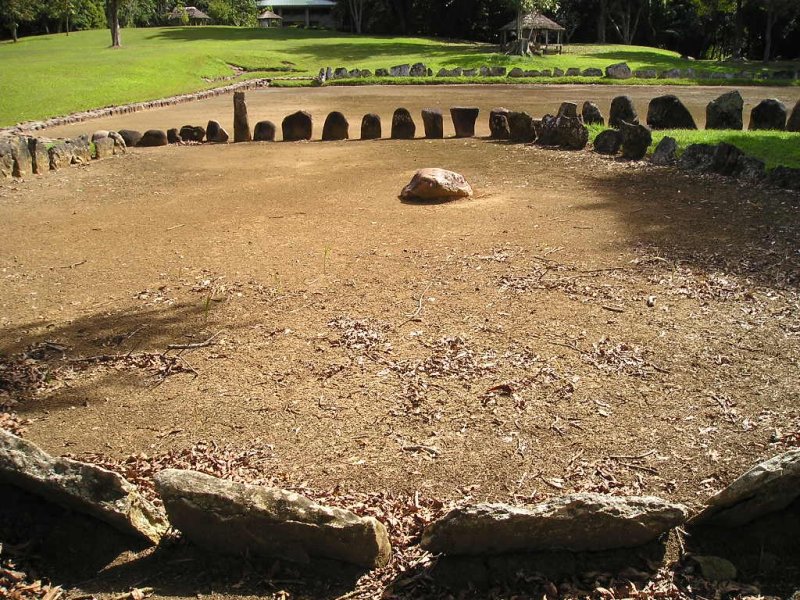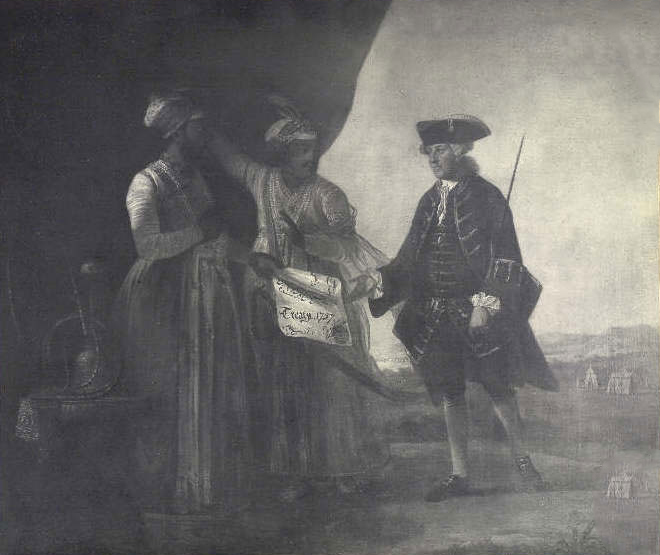|
Guacanagaríx
Guacanagarix (alternate transcriptions: Guacanacaríc, Guacanagarí) was one of five Taíno caciques of the Caribbean island henceforth known as Hispaniola at the arrival of the Europeans in 1492. This was contemporaneous with the first of the voyages of Christopher Columbus. He was the chief of the cacicazgo of Marién, which occupied the northwest of the island. Guacanagarix received Christopher Columbus after the '' Santa María'' was wrecked during his first voyage to the New World. He allowed Columbus to establish the settlement of La Navidad near his village. The colonists that remained there were killed by a rival tribe before Columbus returned on his second voyage. Guacanagarix refused to ally himself with other caciques, who were trying to expel the Spaniards from the Captaincy General of Santo Domingo, and many times served as an informant and spy for the European settlers. Guacanagarix complex In the Dominican Republic, the term (Spanish: ''complejo de Guacanagari ... [...More Info...] [...Related Items...] OR: [Wikipedia] [Google] [Baidu] |
Christopher Columbus
Christopher Columbus (; between 25 August and 31 October 1451 – 20 May 1506) was an Italians, Italian explorer and navigator from the Republic of Genoa who completed Voyages of Christopher Columbus, four Spanish-based voyages across the Atlantic Ocean sponsored by the Catholic Monarchs, opening the way for the widespread European Age of Discovery, exploration and colonization of the Americas. His expeditions were the first known European contact with the Caribbean and Central and South America. The name ''Christopher Columbus'' is the Anglicisation (linguistics), anglicization of the Latin . Growing up on the coast of Liguria, he went to sea at a young age and traveled widely, as far north as the British Isles and as far south as what is now Ghana. He married Portuguese noblewoman Filipa Moniz Perestrelo, who bore a son, Diego Columbus, Diego, and was based in Lisbon for several years. He later took a Castilian mistress, Beatriz Enríquez de Arana, who bore a son, Ferdinand ... [...More Info...] [...Related Items...] OR: [Wikipedia] [Google] [Baidu] |
Dominican Republic
The Dominican Republic is a country located on the island of Hispaniola in the Greater Antilles of the Caribbean Sea in the Atlantic Ocean, North Atlantic Ocean. It shares a Maritime boundary, maritime border with Puerto Rico to the east and a Dominican Republic–Haiti border, land border with Haiti to the west, occupying the Geography of the Dominican Republic, eastern five-eighths of Hispaniola which, along with Saint Martin (island), Saint Martin, is one of only two islands in the Caribbean shared by two sovereign states. In the Antilles, the country is the List of Caribbean islands by area, second-largest nation by area after Cuba at and List of Caribbean countries by population, second-largest by population after Haiti with approximately 11.4 million people in 2024, of whom 3.6 million reside in the Greater Santo Domingo, metropolitan area of Santo Domingo, the capital city. The native Taíno people had inhabited Hispaniola prior to European colonization of the America ... [...More Info...] [...Related Items...] OR: [Wikipedia] [Google] [Baidu] |
Chiefdoms Of Hispaniola
The chiefdoms of Hispaniola (''cacicazgo'' in Spanish) were the primary political units employed by the Taíno inhabitants of Hispaniola (Taíno: ''Haití, Babeque, Bohío''; Ciguayo'': Quisqueya'')' in the early historical era. At the time of European contact in 1492, the island was divided into five chiefdoms or ''cacicazgos'', each headed by a cacique or paramount chief. Below him were lesser caciques presiding over villages or districts and ''nitaínos'', an elite class in Taíno society. Hispaniola was also home to the Ciguayo and Macorix native peoples at the time of the European's arrival. The Taíno of Hispaniola were an Arawak people related to the inhabitants of the other islands in the Greater Antilles. At the time of European colonization, they were at war with a rival indigenous group, the Island Caribs. In 1508, there were about 60,000 Taínos in the island of Hispaniola; by 1531 infectious disease epidemics and exploitation had resulted in a dramatic decline in ... [...More Info...] [...Related Items...] OR: [Wikipedia] [Google] [Baidu] |
Cacique
A cacique, sometimes spelled as cazique (; ; feminine form: ), was a tribal chieftain of the Taíno people, who were the Indigenous inhabitants of the Bahamas, the Greater Antilles, and the northern Lesser Antilles at the time of European contact with those places. The term is a Spanish transliteration of the Taíno word . Cacique was initially translated as "king" or "prince" for the Spanish. In the colonial era, the conquistadors and the administrators who followed them used the word generically to refer to any leader of practically any indigenous group they encountered in the Western Hemisphere. In Hispanic and Lusophone countries, the term has also come to mean a political boss, similar to a ''caudillo,'' exercising power in a system of caciquism. Spanish colonial-era caciques The Taíno word descends from the Taíno word , which means "to keep house". In 1555 the word first entered the English language, defined as "prince". In Taíno culture, the rank was heredita ... [...More Info...] [...Related Items...] OR: [Wikipedia] [Google] [Baidu] |
15th-century Monarchs In North America
The 15th century was the century which spans the Julian calendar dates from 1 January 1401 (represented by the Roman numerals MCDI) to 31 December 1500 (MD). In Europe, the 15th century includes parts of the Late Middle Ages, the Early Renaissance, and the early modern period. Many technological, social and cultural developments of the 15th century can in retrospect be seen as heralding the " European miracle" of the following centuries. The architectural perspective, and the modern fields which are known today as banking and accounting were founded in Italy. The Hundred Years' War ended with a decisive French victory over the English in the Battle of Castillon. Financial troubles in England following the conflict resulted in the Wars of the Roses, a series of dynastic wars for the throne of England. The conflicts ended with the defeat of Richard III by Henry VII at the Battle of Bosworth Field, establishing the Tudor dynasty in the later part of the century. Constanti ... [...More Info...] [...Related Items...] OR: [Wikipedia] [Google] [Baidu] |
Taíno Leaders
The Taíno are the Indigenous peoples of the Greater Antilles and surrounding islands. At the time of European contact in the late 15th century, they were the principal inhabitants of most of what is now The Bahamas, Cuba, the Dominican Republic, Haiti, Jamaica, Puerto Rico, and the northern Lesser Antilles. The Lucayan branch of the Taíno were the first New World peoples encountered by Christopher Columbus, in the Bahama Archipelago on October 12, 1492. The Taíno historically spoke an Arawakan language. Granberry and Vescelius (2004) recognized two varieties of the Taino language: "Classical Taino", spoken in Puerto Rico and most of Hispaniola, and "Ciboney Taino", spoken in the Bahamas, most of Cuba, western Hispaniola, and Jamaica. They lived in agricultural societies ruled by caciques with fixed settlements and a matrilineal system of kinship and inheritance. Taíno religion centered on the worship of zemis. The Taíno are sometimes also referred to as Island Arawaks or ... [...More Info...] [...Related Items...] OR: [Wikipedia] [Google] [Baidu] |
La Malinche
Marina () or Malintzin (; 1500 – 1529), more popularly known as La Malinche (), was a Nahua woman from the Mexican Gulf Coast, who became known for contributing to the Spanish conquest of the Aztec Empire (1519–1521), by acting as an interpreter, advisor, and intermediary for the Spanish conquistador Hernán Cortés. She was one of 20 enslaved women given to the Spaniards in 1519 by the natives of Tabasco. Cortés chose her as a consort, and she later gave birth to their first son, Martín – one of the first ''Mestizos'' (people of mixed European and Indigenous American ancestry) in New Spain. La Malinche's reputation has shifted over the centuries, as various peoples evaluate her role against their own societies' changing social and political perspectives. Especially after the Mexican War of Independence, which led to Mexico's independence from Spain in 1821, dramas, novels, and paintings portrayed her as an evil or scheming temptress. In Mexico today, La Malinche ... [...More Info...] [...Related Items...] OR: [Wikipedia] [Google] [Baidu] |
Benedict Arnold
Benedict Arnold (#Brandt, Brandt (1994), p. 4June 14, 1801) was an American-born British military officer who served during the American Revolutionary War. He fought with distinction for the American Continental Army and rose to the rank of major general before defecting to the British in 1780. General George Washington had given him his fullest trust and had placed him in command of West Point, New York, West Point in New York Colony, New York. Arnold was planning to surrender the fort to British forces, but the plot was discovered in September 1780, whereupon he fled to the British lines. In the later part of the war, Arnold was commissioned as a brigadier general in the British Army during the American Revolutionary War, British Army and placed in command of the American Legion (Great Britain), American Legion. He led British forces in battle against the army which he had once commanded, and his name became synonymous with treason and betrayal in the United States.#Rogets, ... [...More Info...] [...Related Items...] OR: [Wikipedia] [Google] [Baidu] |
Mir Jafar
Mir Jafar ( – 5 February 1765), was a commander-in-chief or military general who reigned as the first dependent Nawab of Bengal of the British East India Company. His reign has been considered by many historians as the start of the expansion of British control of the Indian subcontinent in Indian history and a key step in the eventual British domination of vast areas of pre-partition India. He is best known for his betrayal of Nawab Siraj-ud-daulah (Nawab of Bengal, Murshidabad, Bengal, now West Bengal) in the Battle of Plassey (Nadia district, Bengal, now West Bengal). Mir Jafar served as the commander of the Bengali army under Siraj ud-Daulah, but betrayed him during the Battle of Plassey and ascended to the masnad after the British victory in 1757. Mir Jafar received military support from the East India Company until 1760, when he failed to satisfy various British demands. In 1758, Robert Clive discovered that Jafar had made a treaty with the Dutch East India Company a ... [...More Info...] [...Related Items...] OR: [Wikipedia] [Google] [Baidu] |
Spanish West Indies
The Spanish West Indies, Spanish Caribbean or the Spanish Antilles (also known as "Las Antillas Occidentales" or simply "Las Antillas Españolas" in Spanish) were Spanish territories in the Caribbean. In terms of governance of the Spanish Empire, The Indies was the designation for all its overseas territories and was overseen by the Council of the Indies, founded in 1524 and based in Spain. When the Crown established the Viceroyalty of New Spain in 1535, the islands of the Caribbean came under its jurisdiction. The islands ruled by Spain were chiefly the Greater Antilles: Hispaniola (including modern-day Haiti and the Dominican Republic), Cuba, Jamaica, and Puerto Rico. The majority of the Taíno, the indigenous populations on these islands, had died out or had mixed with the European colonizers by 1520. Spain also claimed the Lesser Antilles including Martinica, but these smaller islands remained largely independent until they were seized or ceded to other European power ... [...More Info...] [...Related Items...] OR: [Wikipedia] [Google] [Baidu] |
:Category:Colony Of Santo Domingo
{{For, the history of the entire island, History of Hispaniola Spanish West Indies Colonial government in the West Indies Santo Domingo Santo Domingo Santo Domingo History of Hispaniola New Spain Santo Domingo Santo Domingo, formerly known as Santo Domingo de Guzmán, is the capital and largest city of the Dominican Republic and the List of metropolitan areas in the Caribbean, largest metropolitan area in the Caribbean by population. the Distrito Na ... Dominican Republic–Spain relations ... [...More Info...] [...Related Items...] OR: [Wikipedia] [Google] [Baidu] |







